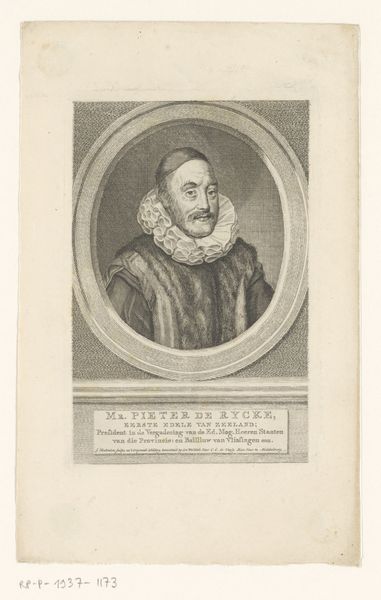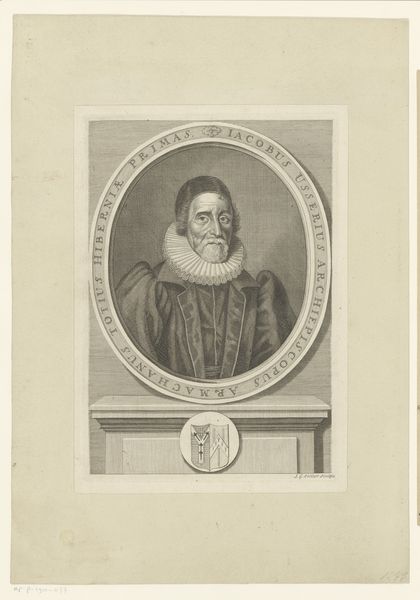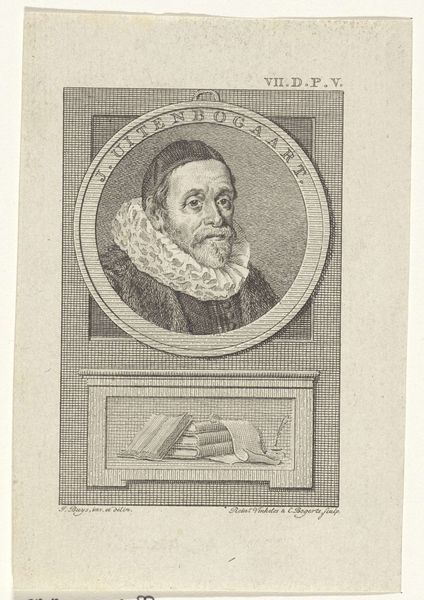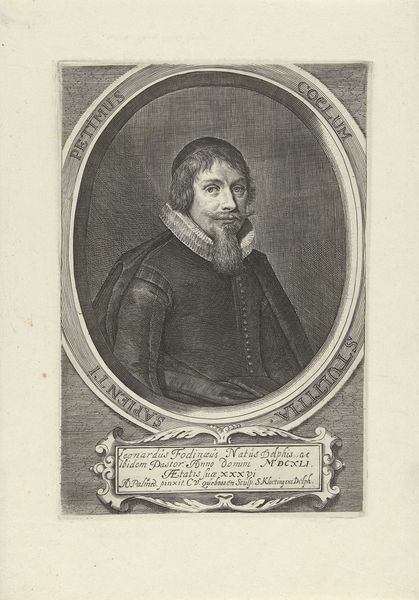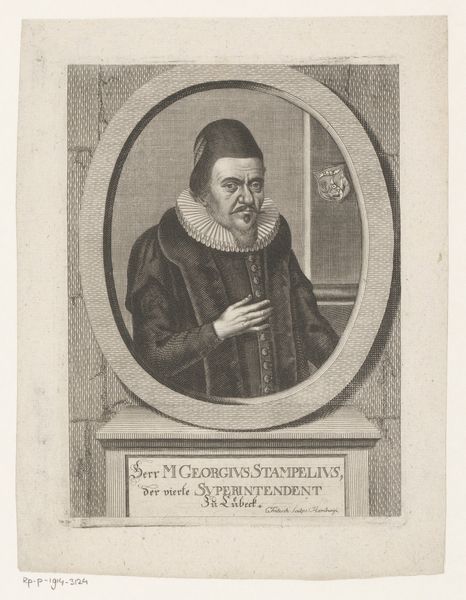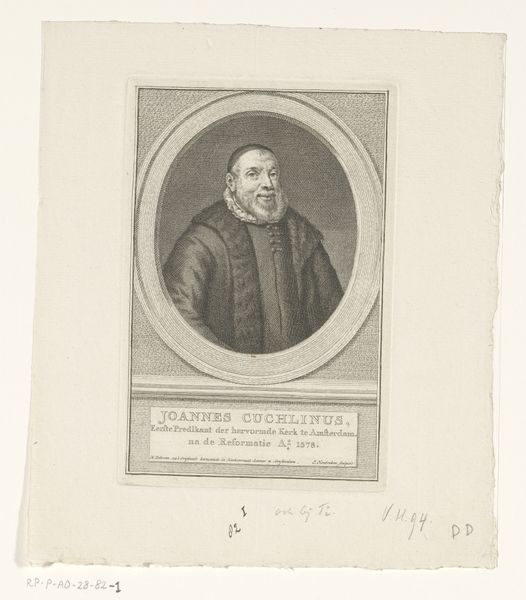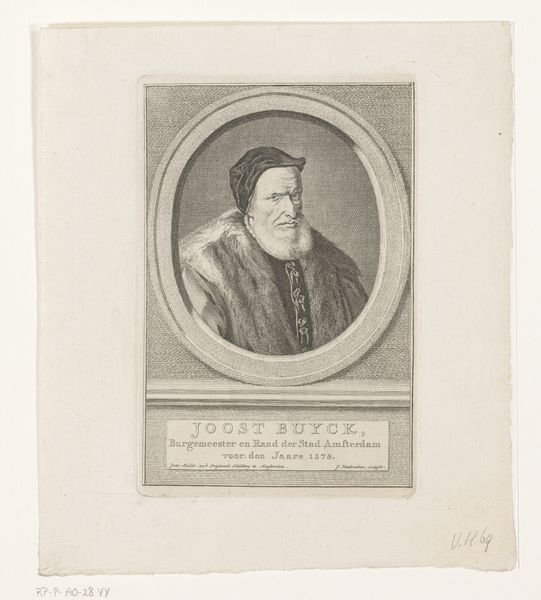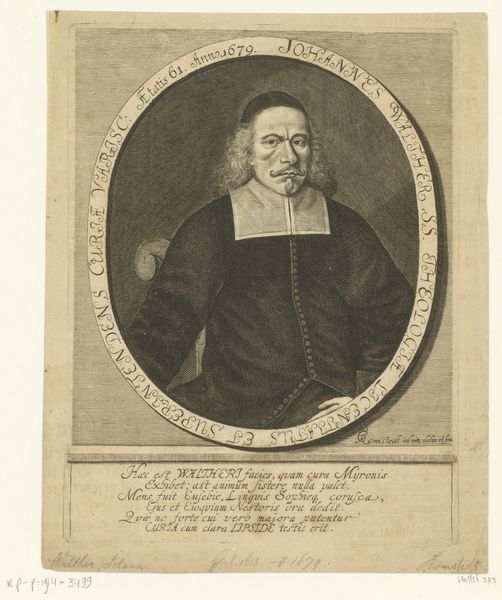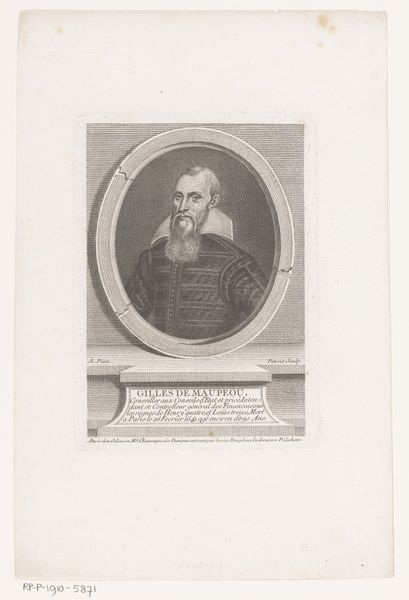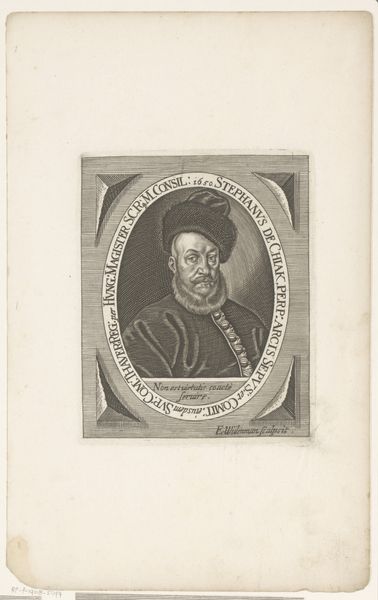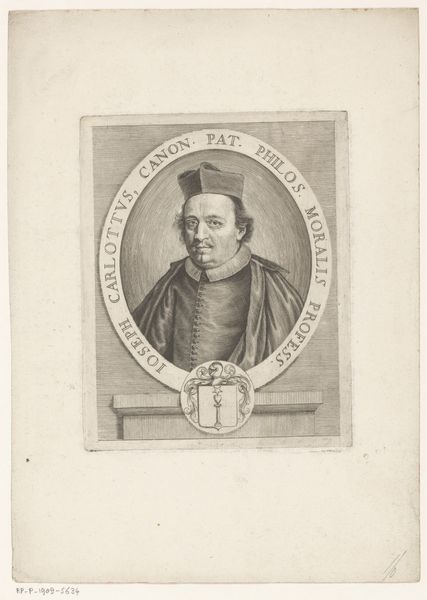
#
pencil drawn
#
aged paper
#
vintage
#
photo restoration
#
pencil sketch
#
old engraving style
#
historical photography
#
old-timey
#
yellow element
#
19th century
Dimensions: height 154 mm, width 113 mm
Copyright: Rijks Museum: Open Domain
Curator: Here we have a portrait of Axel Oxenstierna, likely dating between 1744 and 1765. Editor: He looks… intense. The kind of stare that could wither your houseplants, you know? Is it just me, or does this whole composition feel a bit rigid? Curator: In viewing the Oxenstierna portrait, it's crucial to recognize his influential role within the context of Swedish history and politics. As a statesman during the Thirty Years’ War, his image has been constructed to evoke power, intellect, and authority. Editor: Oh, definitely getting the authority vibe. But there's also a melancholy clinging to him, maybe from the weight of all that statecraft? He is framed, after all, almost trapped in that oval. Does that confine him, or does it give his representation more punch, like he's about to break free? Curator: Consider how notions of masculinity are being performed through his attire and presentation. The fine details in the engraving highlight not only status, but perhaps also gendered ideals of leadership in that period. The portrait presents him as learned, controlled, and commanding, qualities often associated with powerful men. Editor: Absolutely, that beard screams "I run this show," but I keep circling back to that gaze. So much history seems embedded there. You almost feel like you're gazing into the abyss of a whole era. The lines feel almost too etched, don't they, a sort of symbolic brand or historical imprint on Oxenstierna's selfhood? Curator: The artist skillfully employs engraving techniques to construct a certain narrative, yes. And by exploring Oxenstierna’s persona, we open discussions about Swedish state-building, the relationship between powerful figures and artistic representation, and how these narratives are communicated. Editor: True enough. Maybe all great portraits do that… freeze-frame the personal within the epic of the world around them. They are then held to scrutiny long after the person has ceased to be. Curator: That's precisely the compelling paradox of a portrait such as this one of Axel Oxenstierna: The ability to capture both the particularity of a subject and a whole historical span. Editor: Yeah, a quiet encounter with echoes and an abyss staring back at us! Well said.
Comments
No comments
Be the first to comment and join the conversation on the ultimate creative platform.
